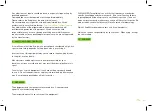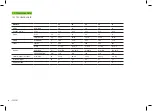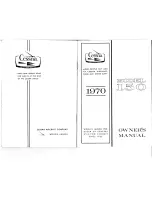
5
and turbulent conditions it remains stable and solid.
The KOYOT 4 flies efficiently. It enters thermals with sufficient speed to
centre in the lift and climbs progressively. The handling is progressive
and effective for even more flying pleasure under an exciting wing of
extraordinary quality.
It is lightweight; even lighter in flight and easy to pilot, with outstanding
turbulence buffering and a surprising range of speed for incredible glides.
1.4 ASSEMBLY, MATERIALS
The paraglider has all the technological innovations used on other Niviuk
gliders and is built with the most careful selection of current materials. It
has all the current technology and accessories available to improve pilot
comfort whilst increasing safety and performance.
In the design of all Niviuk products the team aims to ensure development
and continuous improvement. The technologies developed in recent
years have allowed us to develop greater, better wings. It is in this
context that we would like to introduce the technologies included in this
new model.
RAM Air Intake
- this system is characterised by the arrangement of the
air inlets, to ensure optimal maintenance of internal pressure. Thanks to
this design, we were able to reduce their size, while maintaining the same
air flow at all angles to improve laminar flow. More consistency across
the whole speed range and better performance without compromising on
safety.
Titanium Technology (TNT)
- a revolutionary technique using titanium.
Using Nitinol in the internal construction provides a more uniform profile
and reduces the weight to gain efficiency in flight. Nitinol provides the
highest level of protection against deformation, heat or breaks. The
leading edge is more rigid and the wing surface remains perfectly taut,
without creases or parasitic drag. This optimises glide in all phases of
the flight. Because the flexible rods always return to their original shape,
the integrity of the profile is never affected. Nitinol provides the highest
level of protection against deformation, heat or breaks.
Structured Leading Edge (SLE)
- the use of the SLE considerably
reduces the amount of Mylar which was used in previous Niviuk wings
and this also reduces the weight of the leading edge. Therefore it is
easier to inflate this wing than a paraglider without this system.
3D Pattern Cut Optimisation (3DP)
– the latest generation of wings
require a new fabric panel pattern and cutting system. Creating separate
panels for each of the sections at the front of the wing means the sail
fabric is more taut and crease-free. During the cutting, the optimal
orientation of the fabric section is selected, depending on its final
location. If the fabric pattern is properly aligned with the axes of load, it
suffers less deformation after repeated use, to the long-term benefit of
the leading edge.
3D Leading Edge (3DL)
- adding an extra seam to the longitudinal
axis of the glider helps, on the one hand, give more consistency and
volume to the profile (a more efficient 3D contour) and on the other, joins
and shapes the leading edge panels. The fabric is guided by the panel
position to ensure fewer creases and better load distribution. The result
is a cleaner profile, which benefits the wing in terms of performance and
durability.
The use of these technologies is a big technological leap forward in
building wings and a big improvement in flight comfort.
For the construction process of the KOYOT 4 we use the same criteria,
quality controls and manufacturing processes as in the rest of our range.
From Olivier Nef’s computer to fabric cutting, the operation does not
allow for even a millimetre of error. The cutting of each wing component
is performed by a rigorous, extremely meticulous, automated computer
laser-cutting robotic arm.
Summary of Contents for KOYOT 4
Page 1: ...KOYOT 4 User s manual...
Page 18: ...18...
Page 19: ...19...
Page 22: ...10 3 RISERS PLAN 22...
Page 23: ...10 4 SUSPENSION PLAN 23...
Page 29: ...niviuk com...




































